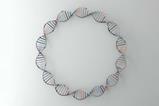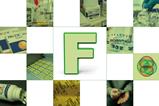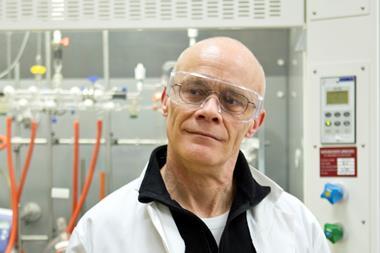Lab technicians are not always given the recognition they deserve when it comes to co-authoring of scientific papers
In the 17th century artists illustrated scientific apparatus being operated by cherubs, rendering invisible the laboratory technicians who would have carried out such experiments. One of the only technicians at that time who received some recognition was Frenchman Denis Papin, who worked with Robert Boyle on the properties of gases. In the preface to his 1680 publication Boyle admits that Papin designed and constructed the instruments, planned and organised the experiments, took and recorded the measurements and was even responsible for most of the interpretation of the results. But as a technician, Papin was not recorded as a co-author of the work.
Over 300 years later many technicians are still not being given the co-authorship they deserve for the scientific research they facilitate. Laurence Dawkins-Hall, a research technician at the BHF Cardiovascular Research Centre at the University of Leicester, UK, even says that opportunities for technicians to publish their work have decreased over the last few decades.
Dawkins-Hall, a biomedical scientist, has had a varied career as a laboratory technician, including setting up and running an early DNA sequencing facility at the University of Manchester from 1995 to 2005. ‘I actually have quite a decent track record for a technician in terms of publications,’ he says. He frequently worked within research groups, often collecting his own data, and was usually included as a co-author on any resulting publications. Even at this stage he encountered at least one researcher who did not think he should be included, and on one occasion a more senior academic stepped in to insist he was named as a co-author.
But over the last 20 years, Dawkins-Hall thinks things have changed for the worse. In his current permanent core technician role, where he manages several labs, he has mostly given up the chance to be directly involved in research projects and has little prospect of publishing. Rather than just reflecting his changing role, he thinks this also reflects a change in culture. ‘PIs in the 90s and early 2000s were more likely to actually cite you on a paper than they do now,’ he suggests.
What counts?
Whether the contribution of a technician warrants co-authorship can be a grey area because there is no universally agreed definition of authorship. Royal Society of Chemistry (RSC) journals state that decisions on authorship should ‘balance intellectual contributions to the conception, design, analysis and writing of the study against the collection of data and other routine work’. The RSC also states ‘authors have a responsibility to give due acknowledgement to all workers contributing to the work, including technical staff.’ Where the contribution is less significant, it is common to acknowledge assistance at the end of the paper.
‘Whether the person you work for chooses to put you on a paper is really at their discretion,’ says Dawkins-Hall. Some PIs may not consider the contribution of a technician to warrant a co-authorship but Dawkins-Hall has also heard some academics say they have a policy not to include technicians, regardless of their contribution, because it’s not necessary for their career progression. ‘In the strictest sense [this is] true,’ he says, ‘but nevertheless, there’s a certain ethical position. If somebody’s contributed something to a paper, they should actually have their name on it.’
Based in a large research-intensive university, another core technician (who wishes to stay anonymous) agrees that technicians are often unfairly excluded from co-authorship. As an electron microscopy specialist, assisting students and researchers across the university, he sees a mixed picture. Some groups are happy to give a co-authorship for scientific discussions and input that add value to the paper, but often contributions are downgraded to only an acknowledgement.
‘The other day, I was browsing newly published papers from the department and saw a recently published paper with images and certain graphs that I talked to the student about how to plot,’ he says. ‘I’m not mentioned. But obviously once it’s published, it’s quite difficult to do anything.’
It is definitely an academic role – we are postdoc-ing for multiple groups and many departments
Part of the problem, according to Dawkins-Hall, is a big change in the role of the laboratory technician, with far fewer technicians working directly in research groups or funded to work on specific research projects. ‘If you go back to the mid 90s, it was common for PIs to put in money for postdocs, and also research technicians … now there’s less of that happening.’ The research roles formerly carried out by technicians are often now part of PhD projects. ‘In many ways, a technician’s role in general has been diminished … they’re seen as bottle washers, rather than independent researchers,’ says Dawkins-Hall.
Katja Loos, a polymer chemist at the University of Groningen in the Netherlands, certainly does not see her technicians in this way. The two technicians in her group who run and maintain equipment also regularly co-author papers and many of her students consider them as second supervisors. ‘I don’t force my PhD students to put the technicians as co-author, they all want that,’ she says. ‘They help the PhD students and postdocs take measurements, but they also discuss the data … they are super experts on this equipment, but also in polymer science.’
Career challenges
Another change is the larger cohort of technicians with PhDs and postdoctoral experience who are keen to continue their publication record. This is the case for the electron microscopy specialist, who after several postdoctoral contracts chose to take a permanent role as a technician to be able to buy a house and start a family. Rather than the on-paper role of running samples, he hoped he would be able to use his research skills and solve problems with academics and students.
He has found this to be the case. ‘The scientific discussion can lead to new areas of research, can lead to new chapters in a PhD thesis and can lead to a discovery that is actually worth publishing,’ he says. ‘I know that my colleague [who] has been there much longer than me has even mentored PhD students, has created PhD projects completely from his findings. So it is definitely an academic [role] – we are postdoc-ing for multiple groups and many departments.’ But he feels frustrated that the contributions and additional experience he brings are not always acknowledged.
Such technicians find themselves at a dead end without the prospects of their roles evolving – many are already at the top of the payscale for technician-level jobs. A lack of opportunities to publish, or recognition for the contributions they have made through co-authorship, is just another indication that the system does not value their specialist skills and makes it more difficult for them to develop a CV that might lead to further progression.
But things are changing – spurred on in the UK by the 2017 Technician Commitment, which aims to ensure visibility, recognition, career development and sustainability for technicians working in higher education and research. Supported by the Science Council and the Gatsby Foundation, universities and research institutes sign up to pledge action on the issues affecting their technical staff , including when they should be credited as co-authors. The 2022 UKRI–Research England funded Talent Commission report on technical skills and careers in UK higher education and research also pinpointed visibility and recognition as a key issue.
New directions
‘Institutions now are starting to sort of take matters into their own hands, and formulating policies,’ says Dawkins-Hall. One example is the John Innes Centre in Norwich , UK, whose Technician Commitment action plan commits them to communicating a new policy on contributions to papers as well as monitoring the number of technical staff with authorship every year. Dan Lester, platform manager of the polymer characterisation research technology platform (RTP) at the University of Warwick, UK, agrees that in many institutions changes are already happening: ‘For instance, on my training form, when I train people, there is even a box they have to tick that says “I will acknowledge you when publications come from this”.’
Lester, who has a chemistry PhD, spent several years as a technician in the chemistry department on a temporary contract, and faced many of the issues reported by other technicians. ‘It was really difficult for people to acknowledge your contribution to anything because, as the phrase goes, “you’re just a technician”. But then there was a big change [in 2017] between the Technician Commitment, and me becoming [part of] a research technology platform, rather than a technician within chemistry,’ he says. At the RTP he is an instrument specialist working across departments, providing his expertise internally and working externally with industry and in collaboration with other universities. Now, he says,‘people are much more likely to include me or my team on publications.’
The boundaries are getting very blurred, and that’s not necessarily a bad thing
Lester estimates he’s been an author on 25–30 publications in the last nine years. ‘I’m typically the analytical lead, where other groups have developed the research and then I’ve had to develop the analysis to go with it,’ he explains. He now formally has his own PhD student, writes research grants and attends academic conferences. ‘The boundaries between what technical staff do and what traditionally academic staff do are getting very blurred, and that’s not necessarily a bad thing,’ he adds.
Several other universities are developing a technician career path that would allow more opportunities for research. In February, the University of Liverpool launched the first UK research technical professional career pathway, which will provide an alternative to the academic track that can reward, retain and provide recognition for technical staff and develop technical specialist careers. At Warwick, Lester says some technicians have already been promoted to grades that were previously only available to lecturers and professors. Finding ways to fairly assess all technical roles will be difficult though.
Some universities are lagging behind. The electron microscopy technician says that although he and colleagues have been asked by their university to redefine their roles to better describe what they actually do, there is no indication yet that this will come with salary increases that match an academic pathway. ‘I was already at the top of the technicians scale when I was hired five, six years ago,’ he says. ‘I think we should be given parity with research.’
Dawkins-Hall is also keen that all technicians benefit from these changes. ‘At least half the technicians in the workforce, particularly the older ones like me, don’t have PhDs,’ he says. Many of them are also keen to publish and engage in research. ‘There needs to be a shift in culture,’ says Dawkins-Hall.
Whether it’s a shift backwards, or a new way forwards, Lester does see ‘a net positive change,’ in opportunities for technicians to be part of academic life, including opportunities to publish. But, he acknowledges, ‘we’re not there yet’.


















1 Reader's comment